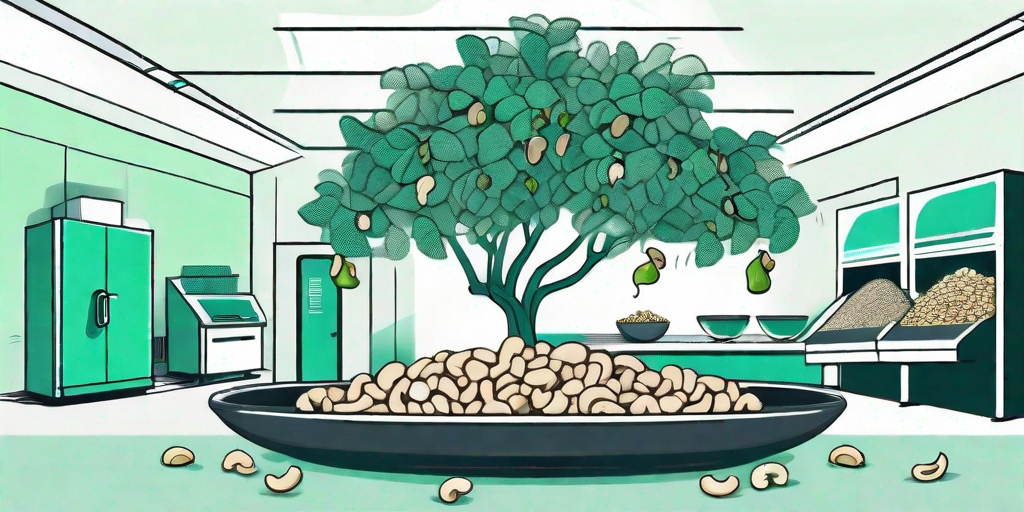
Welcome to the intriguing world of cashews, where we'll embark on a journey from tree to table. This isn't your everyday nut; it's a culinary superstar that's as versatile as it is delicious. But have you ever stopped to wonder how this little gem makes its way from the tree to your snack bowl or dinner plate? Let's dive in!
The Life of a Cashew Tree
Before we get to the cashew itself, let's take a moment to appreciate the tree that gives us this wonderful nut. The cashew tree, or Anacardium occidentale if you want to get scientific, is a tropical evergreen that loves the sun and hates the cold. It's native to Brazil but has since spread to various parts of the world, thanks to Portuguese explorers.
The cashew tree is a bit of a show-off. It flaunts a lush, leafy canopy and produces pretty pink flowers. But the real star of the show is the cashew apple, a pseudo-fruit that's bright red or yellow and looks a bit like a bell pepper. Hanging off the bottom of this apple is the cashew nut, encased in a hard shell. Now, let's get to the good part: how we get from tree to table.
The Harvesting Process
Picking the Cashews
Harvesting cashews is a labor-intensive process that requires a keen eye and a gentle hand. The cashews are typically ready to harvest when the cashew apple turns a vibrant color and the shell of the nut hardens. Workers then pick the cashew apples by hand, ensuring not to damage the precious cargo.
It's worth noting that the cashew nut is actually a seed that hangs from the bottom of the cashew apple. It's encased in a hard shell that contains a toxic resin. This is why you never see cashews sold in their shells, unlike other nuts. The resin can cause a nasty skin reaction, so it's best left to the professionals to handle.
Processing the Cashews
Once the cashews have been harvested, they're taken to a processing facility. Here, they go through a process of drying, roasting, shelling, and peeling. The drying stage is crucial as it helps to make the shell brittle for easy cracking. The roasting stage not only makes the cashew easier to shell but also neutralizes the toxic resin.
After the cashews have been shelled and peeled, they're graded based on size and color. They're then packaged and shipped off to stores around the world, ready to be enjoyed by cashew lovers everywhere.
The Versatility of Cashews
Cashews are a bit like the Swiss army knife of the culinary world. They're incredibly versatile and can be used in a variety of dishes. From creamy cashew milk and butter to rich curries and vegan cheeses, the possibilities are endless.
Not only are cashews delicious, but they're also packed full of nutrients. They're a good source of healthy fats, protein, and essential minerals like magnesium and zinc. So next time you're enjoying a handful of cashews, remember you're doing your body a favor too!
FAQs
- Why are cashews so expensive?
Cashews are pricey because of the labor-intensive process involved in harvesting and processing them. Each cashew has to be picked and processed by hand, which adds to the cost.
- Can you eat the cashew apple?
Yes, the cashew apple is edible and is often used in jams, juices, and desserts in countries where cashews are grown.
- Why aren't cashews sold in their shells?
Cashew shells contain a toxic resin that can cause a skin reaction. This is why they're always sold shelled and processed.
Conclusion
So there you have it, the fascinating journey of cashews from tree to table. It's a labor of love that involves careful harvesting, meticulous processing, and a whole lot of patience. But the end result is worth it: a delicious, versatile nut that's loved by people all over the world.
Next time you're snacking on a handful of cashews or cooking up a cashew curry, spare a thought for the journey those little nuts have been on. It's a story of nature, hard work, and culinary delight. And that, my friends, is something to be savored.











